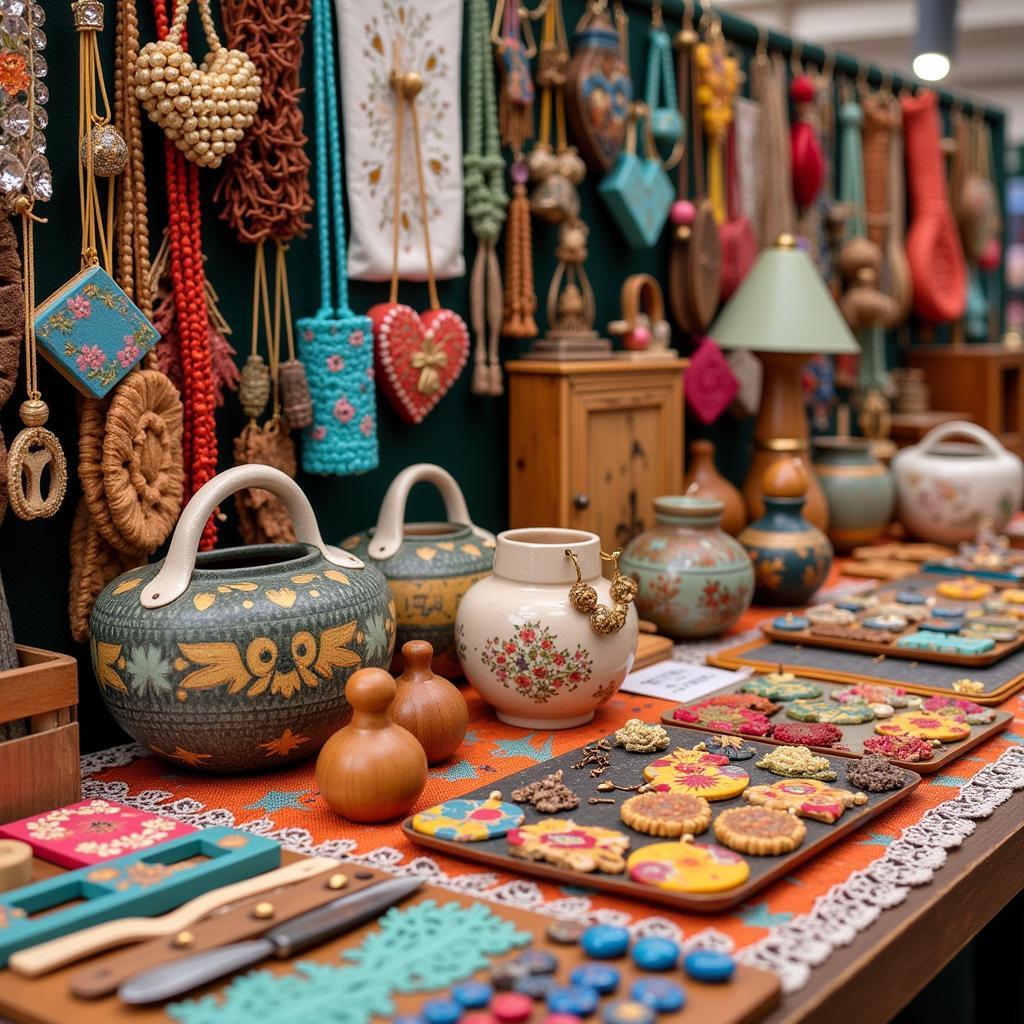Dive into the World of Fantasy Pulp Art
Fantasy Pulp Art, a vibrant and imaginative genre, transports us to realms of swords and sorcery, captivating readers with its bold visuals and thrilling narratives. This unique art style, born during the golden age of pulp magazines, continues to inspire artists and storytellers today.
A Blast from the Past: The Origins of Fantasy Pulp Art
The term “pulp” originates from the inexpensive wood pulp paper used for these magazines, which flourished from the 1920s to the 1950s. Fantasy, alongside other genres like sci-fi, horror, and adventure, found a home within these pages, offering affordable entertainment to the masses. Artists, often working on tight deadlines and budgets, developed a distinctive style characterized by exaggerated figures, bold compositions, and vivid colors.
What Makes Fantasy Pulp Art So Enchanting?
 Key Characteristics of Fantasy Pulp Art
Key Characteristics of Fantasy Pulp Art
Fantasy pulp art possesses a raw, visceral energy that draws the viewer into its fantastical worlds. Here are some key elements that define this captivating genre:
- Dynamic Action: Movement and energy are paramount, often depicting heroes in the heat of battle or engaged in daring feats.
- Exaggerated Anatomy: Muscular heroes and curvaceous heroines are commonplace, their features amplified to embody ideals of strength and beauty.
- Vivid Colors: Bold, contrasting colors heighten the sense of drama and otherworldliness.
- Fantastical Creatures: Dragons, wizards, monsters, and mythical beings populate these worlds, adding to the sense of wonder and escapism.
“Fantasy pulp art isn’t about realism,” says renowned fantasy illustrator, Anya Voronin. “It’s about capturing the spirit of adventure, the thrill of the unknown. It’s about tapping into our primal fascination with myth and legend.”
From Pulp to Pixel: Fantasy Pulp Art in the Digital Age
Far from being relegated to the past, fantasy pulp art continues to thrive in the digital age. Artists now utilize powerful software and tools to recreate the distinctive look and feel of classic pulp, breathing new life into the genre. Digital painting techniques allow for greater control and detail, while photo manipulation can be used to create stunningly realistic textures and effects.
The enduring appeal of fantasy pulp art lies in its ability to ignite our imaginations, transporting us to worlds beyond our wildest dreams. Whether rendered in the classic style or reimagined through a digital lens, fantasy pulp art continues to captivate and inspire.


